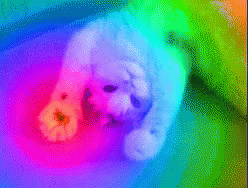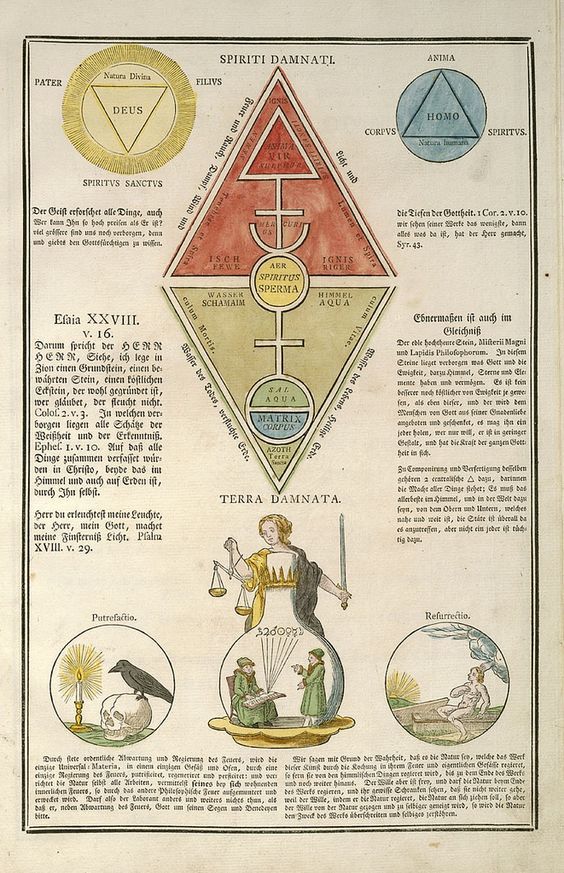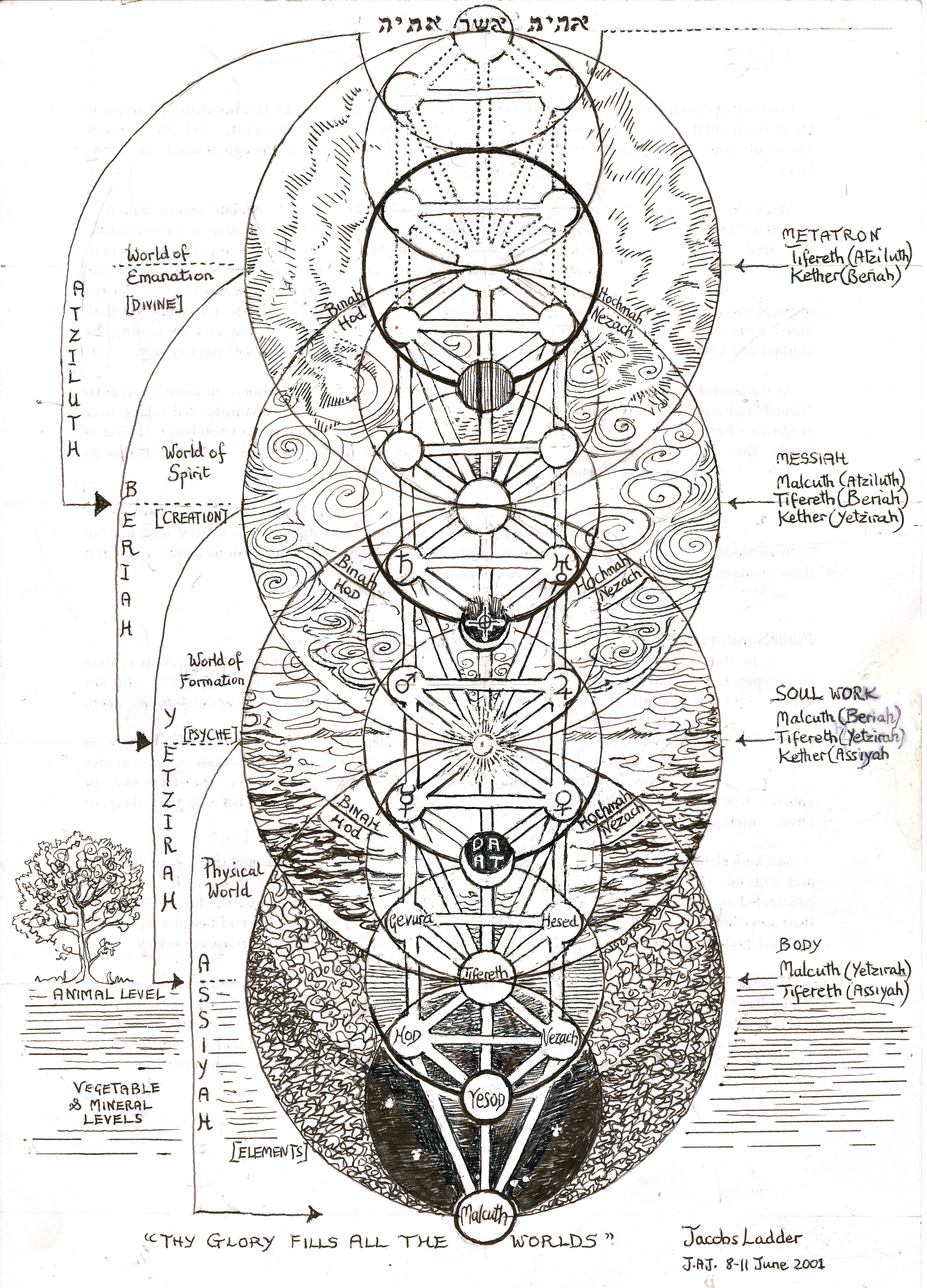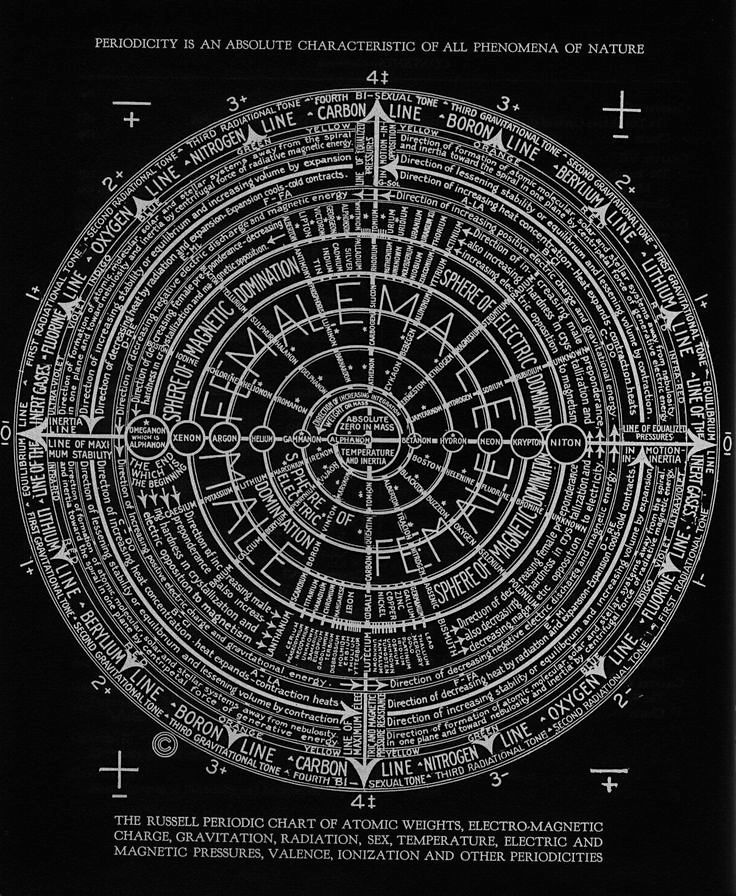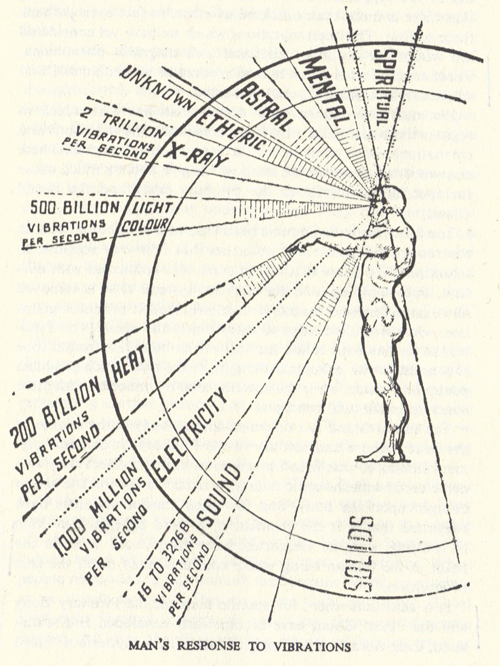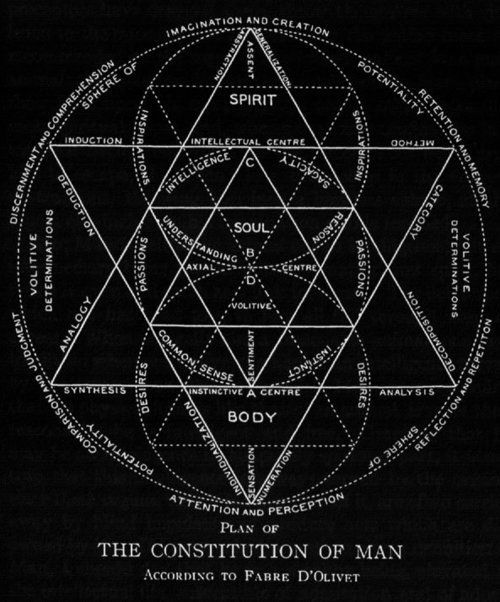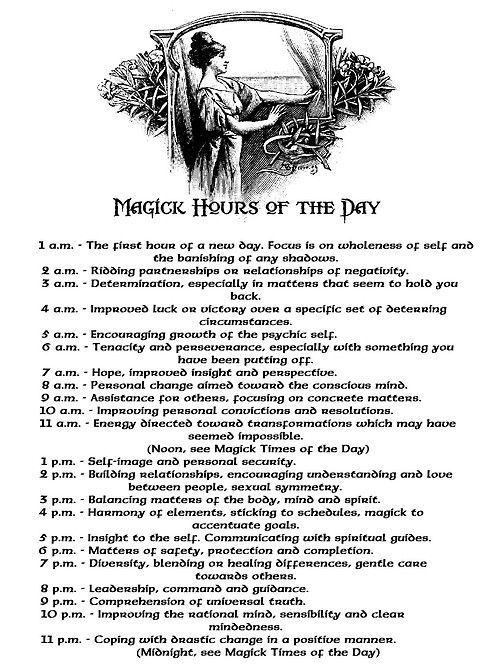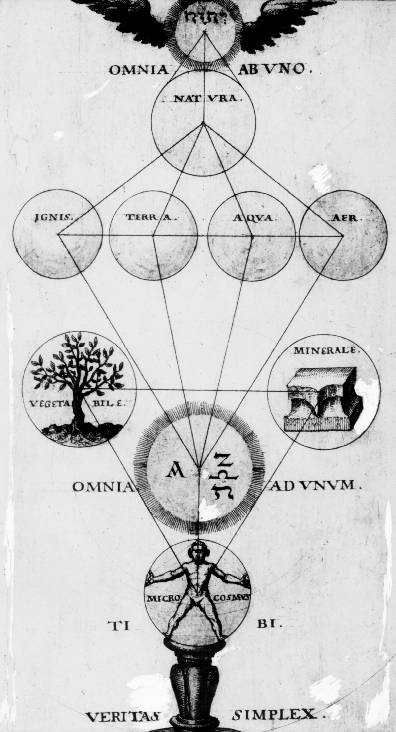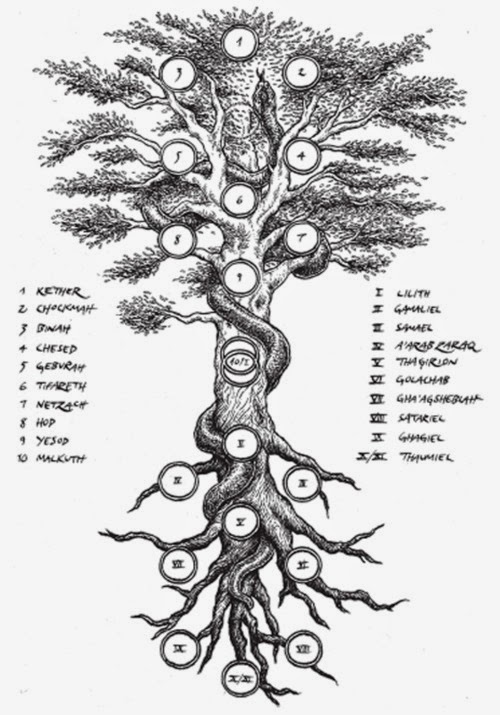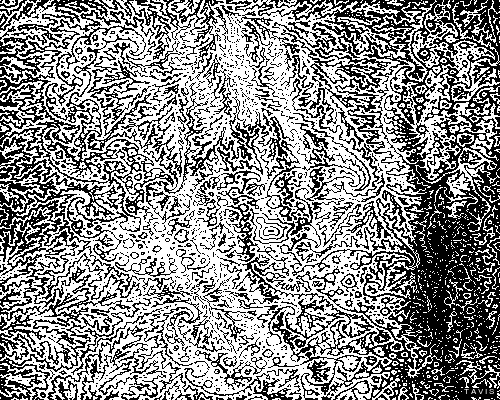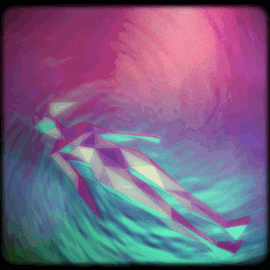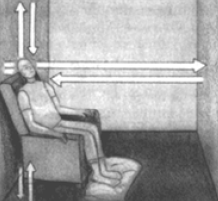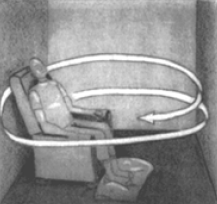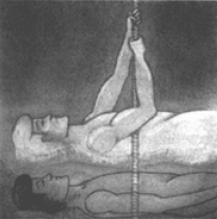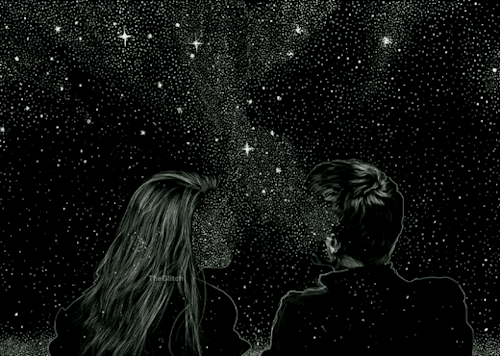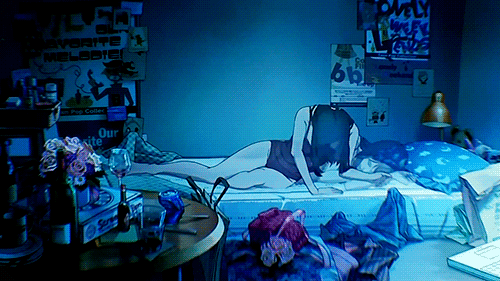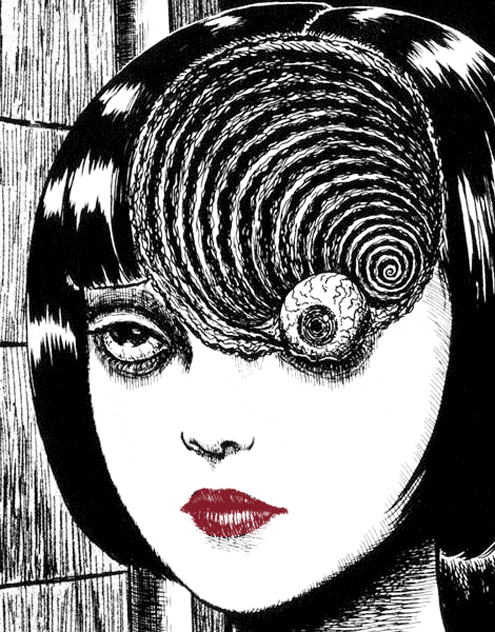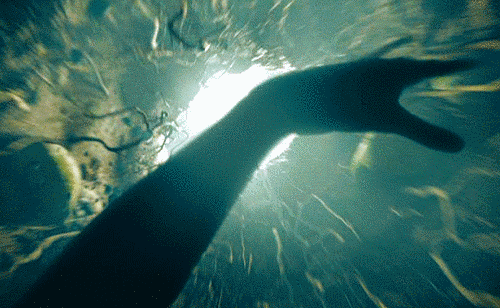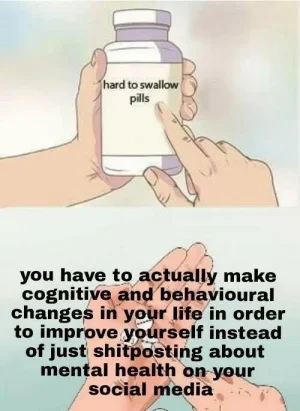A portion of the book
‘Astral Dynamics’ on Astral Projection by Robert Bruce
I will include a few more chapters later.
If you have any questions or want specific sub-topics about this let me know and I will find the appropriate info for you.
Enjoy and have fun projecting!
(Pictures added by yours truly)
Preparations for Projection
Consciously projecting out of body is nowhere near as difficult as is commonly believed.
It is simply a matter of deeply relaxing the physical body, clearing the mind, then triggering the projection reflex with an exit technique.
Most people, if they are prepared to put a little time and effort into developing the necessary skills, will have no trouble accomplishing this, right up to the actual exit phase of projection.
What happens from that moment onward depends greatly on their energy, self-control, balance, attitude, and intelligent planning.
Trance and Deep Physical Relaxation
I have found that the majority of people who fail conscious-exit projection either have a problem with the trance state (too light, too deep, or too little control) or they have neglected to fully learn and practice deep physical relaxation - more usually both.
It is quite possible to enter the trance state without having a deep level of physical relaxation, just as it is possible to fall asleep with muscular tension still in the physical body.
This, in itself, can cause enormous problems for projectors during the exit phase.
Many people hurry through or skip the deep physical relaxation exercises, often believing they are physically relaxed enough simply because they can get into the trance state fairly easily.
They do not understand that the trance state, plus tiredness resulting from a sleep deficit, can override deep physical relaxation as a requirement for entering the trance state.
They go on with projection attempts thinking they are doing everything correctly, while actually not fulfilling the requirements for conscious-exit projection.
This can be extremely frustrating, with unsuspected physical tension ruining what might otherwise be a string of successful OBEs.
Time and again I tell people - and time and again they don't seem to hear me when I say - "The real secret to projection is deep, deep, deep physical relaxation!”
Too simple a solution, you might say, but it's the simple truth.
A light-to-normal trance combined with a deep level of physical relaxation is the best combination for a smooth and successful projection exit.
A lighter level of trance than most people usually seem to attain during projection attempts allows for greater clarity of thought.
This makes the exit easier and provides better control during and after the exit.
Many people go way too deep into the trance state, usually because of a sleep deficit, then experience heavy REM (rapid eye movement) activity, cobwebs, and other heavy trance-related energy-movement sensations, all of which can be very distracting during the exit.
The Projection Reflex
When the energetic balance between the physical body, the expanded energy body, and the mind reaches the critical point where projection can occur, a built-in energetic event that I call the projection reflex triggers the full generation and extrusion of the projectable double.
The first requirement is for consciousness to reflect itself into the expanding etheric body, as happens when the physical body falls asleep or enters the trance state.
This causes an internal shift of consciousness into the first level of subtle body, the expanded etheric body, as it is internally generated.
Normal sleep takes awake consciousness right out of the projection equation.
With the awake mind out of the way, safely asleep, the natural generation and projection of the real-time double occurs gently and swiftly.
The projection reflex is thus triggered naturally and causes no heavy exit sensations that might awaken the sleeper.
But if the awake mind holds itself coherent long enough, in a deeply relaxed and tranced state, it can trigger this reflex with a projection technique.
Once triggered, the projection reflex makes the rest of the exit automatic, and even difficult to stop.
Separation Pressure
To consciously project out of body, it is necessary to shift and hold a strong point of body awareness outside the bounds of the physical body, strongly enough and long enough to trigger the projection reflex.
All projection techniques, if you analyze them, are designed to shift body awareness outside the physical body in some fashion.
Logically, the stronger and more direct an awareness action is, the more pressure it will exert on the projectable double.
The more separation pressure exerted, the more quickly and easily will the projection reflex be triggered.
One of the most popular projection techniques today involves reaching out for the vibrations.
As you attempt to project you reach out with your mind, imagining or visualizing yourself doing this, trying to find the vibrations somewhere outside your physical body and imagining yourself trying to pull these vibrations into your physical body to cause projection.
This is reasonably effective, although I consider the idea that the vibrations could exist apart from the physical body to be illogical.
What causes separation pressure is the exterior body-awareness action of reaching out for something and pulling on it.
It does not matter what is being reached out for, as long as something is being reached for and pulled on with body awareness.
The vibrations technique, however, is not as effective as techniques based on tactile imaging, such as the rope technique and others given in the following chapters.
Tactile imaging can be used to mimic any physical action with body awareness alone, both inside and outside the bounds of the physical body.
The simpler the action, the easier it is to focus on, and thus the stronger its effect on the projectable double.
Hand and arm actions are the easiest and hence the strongest actions to mimic with body awareness.
The ease of use and sheer effectiveness of simple awareness hands actions is shown in the training units given earlier in this book.
Most meditation and trance-induction techniques exert some degree of separation pressure on the projectable double.
Whatever the mental technique, they are all designed to induce some kind of inner movement away from the physical body, causing dissociation from the physical body and loss of normal levels of waking consciousness.
This is usually done through some kind of imagined or visualized falling or downward motion.
Any internal downward-moving mental action will cause body awareness to shift slightly outside the confines of the physical body.
This causes gentle separation pressure over a wide area of the body.
These actions are usually the reverse of what is needed to trigger the projection reflex.
This is more like trying to get the projectable double to fall out of its physical body under its own steam, rather than to project out.
These types of actions will bring on the trance state, but will not usually trigger the projection reflex unless it happens spontaneously.
The Famous Vibrations
In my opinion, the famous vibrations are not the cause of projection, but a symptom of the energetic activity associated with the internal generation of the projectable double.
When energetic conditions are ripe for projection, the physical/etheric body begins to internally generate its projectable-double aspect.
This causes some pretty major energetic activity, felt throughout the body as vibrations.
But even though the buzzing sensation of vibrations is strongly felt in and by the physical body, no detectable physical vibrations are present.
The physical body does not actually vibrate or buzz.
This indicates that these vibrations are felt from within the etheric body only, or from within the projectable double as it is being generated, not from the physical body.
Often, the vibrations start well before projection actually occurs.
Vibrations often are localized to parts of the physical body, which indicates that only parts of the projectable double are being generated.
For example, if only the legs and lower torso are vibrating, then only the legs and lower torso of the projectable double are being generated at that time.
At times like this, projectors will often feel their legs or arms floating loose and moving about outside the bounds of their physical body.
When vibrations are felt in only part of the body, those vibrating parts only have reached the deeply relaxed and energetically excited state required for projection to occur.
The parts that are not vibrating, therefore, must be suspected to be unready for projection, possibly due to hidden physical tension in those areas.
Many people find themselves stuck to a part of their physical body during the exit.
They also often experience pain and discomfort in these stuck areas if they continue trying to force themselves out of their body regardless.
I would suggest here that a lack of whole-body deep physical relaxation is the major contributing factor to this common problem.
Health, Fitness, and Projection
While physical fitness is most definitely not a necessary precursor for conscious-exit projection, it can be a big help.
A reasonable level of fitness makes it easier to attain and hold a deep level of physical relaxation and the trance state.
A healthy physical body will generally have less discomfort caused by coughing, cramps, and circulation problems.
Problems like sleep apnea can also be caused or made worse by a poor level of fitness, and anything like this can have a negative influence on projection ability.
Poor health and fitness do not prohibit conscious-exit projection.
Some illnesses may even make projection easier.
Projection techniques may need to be modified, especially the resting position used, to compensate for an illness.
For example, if coughing is a problem, a more upright projection position will help ease the trouble.
If poor circulation is a problem, more attention will have to be paid to bed or chair padding.
For muscular or spinal cramps, the position and padding used during projection attempts will need modifying to provide better support.
If a health or disability problem is severe, it may be wise to consult a medical doctor, physical therapist, or chiropractor.
You don't have to say why you are seeking increased comfort.
You can merely cite the desire for deep physical relaxation.
Position and Comfort for OBE
The resting position of the physical body during projection attempts can have a great effect on what happens before, during, and after a projection.
Lying prone on your own comfortable bed in your natural sleeping position is not the ideal scenario for conscious-exit projection.
We are all conditioned to start falling asleep when we get into bed - which increases the likelihood of falling asleep and losing shadow memories if projection does occur.
I recommend either using another room for projection, or changing the position of the bed being used.
If change is not possible, relax with your head at the other end of the bed.
It is also possible to condition yourself for projection by using a low-wattage colored light, with perhaps a favorite incense.
If you use these only when a projection attempt is going to be made, you will soon become conditioned to them.
I always recommend a sitting or semisitting position for projection, if at all possible.
It is not only easier to project from a sitting position, but it is also easier to recall a projection after the event.
Sitting helps overcome many shadow memory loss problems caused by falling into too deep a sleep too early during a projection.
If you have ever fallen asleep in a chair, you will notice that you do not sleep as deeply or as soundly as you would in your own comfortable bed.
It is also much easier to wake up from a sitting or semisitting position, just as it is easier to stay awake while holding the trance state in the sitting position.
This also makes it easier, if you have accidentally fallen asleep, to notice and react to the energetic sensations that herald the return of the projected double during reentry and reintegration.
There are several ways to adapt the sitting or semisitting position to your situation and needs.
Keep in mind that you are preparing for a projection, not settling down for a comfortable night's sleep.
While comfort is important, the ability to deeply relax the physical body while holding the mind awake is far more important.
A little discomfort can be a good thing for projection.
An armchair or recliner works well for projection, as long as it has good back and neck support and you put a pillow under your feet.
If you use a plain armchair, I suggest putting a telephone book or brick under the front of the chair to angle it slightly backward.
This stops your head from rocking forward onto your chest and helps avoid breathing problems.
Use pillows or cushions to make sure your neck and lower back are correctly supported.
You can also place pillows under your arms and hands to increase their comfort.
If the back of the armchair is too low and provides no neck support, position it against a wall and place another pillow behind your head to support it. Wear loose and comfortable clothing and loose socks - depending on the local temperature, of course.
An oversized tracksuit is ideal.
If the room is cold, it is better to use a heater than to pile on heavy covers.
If insects are a potential problem, spray the room thoroughly first or use mosquito netting and insect repellent.
If you cannot use an armchair, you might use a folding pool-side recliner with arms and a full-length foam mattress.
Use pillows to increase the comfort of your arms, legs, and neck.
Probably the easiest and most convenient method is to prop yourself up as if you were about to have breakfast in bed.
You don't want to be too upright, as this can be uncomfortable.
Neither do you want to lie too flat.
I suggest that you try an angle of approximately 45 degrees, and then vary to suit yourself.
A hospital bed with an adjustable back would be perfect, if you could acquire one.
Bedcovers should not be so heavy as to cause discomfort.
Use several pillows to prop yourself up in bed, or use a dense foam bolster and a few pillows.
Cut a foam wedge-shaped bolster to size (quite cheap from most foam suppliers), or use a bean bag.
It is important that your body be well supported and not tend to sag or slide or cramp up while deeply relaxing.
Bad posture causes tension and will eventually lead to distracting pain or may require movement to ease cramps and circulation problems, either of which will break the deeply relaxed state.
Disconnect your telephone or turn down the volume, or take it off the hook or set an answering machine to take calls in silence.
Most background noise can be overcome by using "white noise”.
Simply turn on on a radio or TV and tune it to an off station.
Turn up the volume until the hiss of white noise covers background noises.
I do not recommend that music be played during projection attempts, as music is generally distracting and can cause emotional responses and tension, which can ruin a projection attempt.
But long-play recordings of rain or surf sounds, etc., are an acceptable alternative to white noise.
(Skarekrow - As I have said before...binaural beats, specifically around 4hz seems to work best for me personally,
but white or pink noise is great as well)
Comfortable earplugs or headphones also help eliminate noise.
Practicing trance exercises in fairly noisy places - say while watching TV - will, with practice, enable you to totally ignore any distracting noises, making projection possible even when total quiet cannot be achieved.
Finally, since fear caused by the lack of suitable lighting is a major contributing factor to projection failure, I suggest that you use a night-light or lamp with a low-wattage bulb.
Many people find themselves in gloomy darkness once they get out, and abort their OBE soon after the exit, simply because darkness makes everything appear sinister.
Even a mild fear of the dark, added to the natural trepidation caused by being in the experientially unknown out-of-body environment, is a recipe for anxiety, fear, and a failed OBE.
The very best way to overcome it is to project during daylight hours.
Early morning, just after dawn, is probably the most suitable time for most busy or working people.
By the way, the physical body's eyes must be kept closed at all times during OBE exercises and projection attempts.
This may sound obvious to most people, but I've had a large number of queries over the years on this point.
The projected double will gain real-time sight just before or during the exit.
There is no need to open the projected double's eyes or do anything else after leaving the physical body.
OBE or Lucid Dream
The resting position of the physical body can affect not only the ease but the type of experience that will occur.
This does not affect everyone, but it is definitely worth a mention.
Many people, including myself, have difficulty projecting while lying curled up on their side.
I must be either lying on my back or sitting in a chair, or any variation between these.
For projection, I much prefer a recliner laid back about twenty-five degrees from the vertical.
If I curl up on my side, in bed or on a recliner, I either fall asleep or have a lucid dream.
For some reason, my body needs to be flat or upright for easy projection, although it does not seem to matter if my head rests straight or slightly to either side.
I suspect the physical position needed for lucid dreams and OBEs may vary from person to person.
This may play a significant part in early projection attempts, especially if the strength of this effect is unknown.
If the resting position affects you as it does me, this could stop you from projecting.
I suggest that you vary your projection position slightly after repeated failed attempts, or if falling asleep is a problem, just to see if this has any effect.
Projection Technique
Achieving conscious-exit projection requires learning a delicate mental and physical balancing act.
This can be likened to a baby learning how to walk.
A baby has to learn how to cope with gravity, body weight, and balance, and must coordinate many undeveloped muscles, nerves, and skills, all at the same time.
The first few times babies try to stand, they totter and fall over because their brain does not know how to coordinate everything.
Similarly, during early conscious-exit projection attempts, would-be projectors attempt to hold a deeply relaxed physical and mental state while trying to exteriorize their sense of body awareness, while also trying to deal with some pretty major energetic sensations.
There are so many new things to do and adapt to, and these must all be done just right while so much else is happening, that it is very easy to lose control and fall back into the full waking state.
Applying the skills that make up projection can take time.
The brain learns to coordinate multiple tasks best through applied effort and regular practice.
The more time spent trying to project, the better the brain will get at coordinating everything and the easier the whole exercise will become.
Before you attempt any of the projection techniques in the following chapters, consult the training and development units earlier in this book.
All the required terminology, background, and techniques are there.
Projectable Body Loosening
Projectable body loosening involves temporarily shifting body awareness outside the bounds of the physical body with simple awareness exercises.
The following exercises are all designed to loosen up the projectable double.
They also get the projector used to exterior body-awareness actions during a deeply relaxed and/or tranced state.
While deep physical relaxation and trance are recommended for these exercises, they can also be done from a lightly relaxed state only and still make for good practice.
The exercises are very easy to do and are capable of triggering an OBE on their own, so be prepared.
If this does happen, or a partial projection is achieved, use the exercise that caused this as the basis for your main projection technique, or adapt and combine this with a similar method.
With projection, if you do something that works, stick to it and build on it, as what works... works!
Bounce Loosening
Put yourself in the required state for projection with a deeply relaxed body and mind. Ideally, use the full-body deep physical relaxation and trance-induction techniques, then use the full-body energy circuit for a couple of minutes.
Leave your primary centers alone for this exercise.
Feel the room around you with your mind and imagination, and build a picture of it in your mind's eye.
Using your memory, take note of how everything would look from your position if your eyes were open: where doors, windows, ceilings, walls, and furniture are.
Take a good look and memorize everything before starting.
Start a full-body awareness bounce action from head to feet, arms resting comfortably at sides.
Continue this until you are settled into a comfortable bounce speed and rhythm.
Next, extend your point of awareness - the part of your awareness you are bouncing through your body - out past your head and feet until you are bouncing your awareness from the wall above your head to the wall below your feet, if lying down.
If you are sitting, bounce from the floor, through your body, to the ceiling above you, then back down through your body to the floor.
Repeat this as a continual bounce action.
Adjust the angle of the bounce action so it is directly in line with your torso.
As your awareness bounces off the wall, ceiling, or floor, use your memory-based imagination to sense what each surface would look and feel like close up.
See this as if you were really there, right up close to it.
Try to momentarily feel your new spatial position as it would be if you were actually there.
Be aware of the spatial change and of the new position, of where your physical body, walls, doors, windows, and furniture are for that single moment as your awareness bounces off each surface.
Create a snapshot of this new position in your mind's eye each time you bounce your awareness off a surface.
Feel yourself being there, out of your physical body for just a moment.
Fig. 23.
Two bounce actions for loosening the projectable double
If you have trouble with this, stick small targets to the ceiling and walls and memorize what it is like to be up close to these targets.
Re-create the image of these with your imagination in your mind's eye during these exercises.
Before starting this, if you like, get up and place your face against these targets so you can really get the feel for each position.
Memorize what it feels like to really be there.
Momentarily re-create mis feeling at the end of each bounce.
Once you get the bounce action going, pay more attention to bouncing your awareness off the wall or ceiling than to feeling your awareness passing through your physical body.
Once your body awareness is at work outside your physical body, the feel of your physical body must be allowed to slide gently into the background.
The next stage is to bounce your point of awareness away from your body in line with your face, in line with where your eyes would be looking if they were open and looking straight ahead.
If lying down, repeatedly bounce to the ceiling above you, then back down through your face to the floor beneath the bed.
If sitting, repeatedly bounce off the wall opposite you, then back through your face and to the wall behind you.
Again, once you get this bounce action going, allow the feel of your physical body to slide into the background and concentrate on the exterior bounce action.
As I said, this bounce technique can trigger the projection reflex on its own.
Bounce techniques are also useful for getting the look and feel of projection without actually getting too close to the exit.
The bounce technique momentarily shifts your point of awareness outside your physical body, causing something like a brief, low-powered projection each time your point of awareness bounces off a surface.
Repeat this exercise for as long as you wish, before continuing with an actual projection attempt.
Breathing Loosening
Put yourself in the required state for projection.
Feel the room around you and take note of its spatial layout.
Concentrate your awareness in your breathing action and feel yourself breathing slowly and naturally IN and OUT.
As you breathe IN, feel yourself expanding outward as your lungs fill to capacity, as if your physical body were rapidly expanding outward like a balloon. Feel the room shrinking around you as you expand to fill it.
At the end of the IN breath, try to feel your awareness filling the whole room to capacity.
As you breathe OUT, feel yourself shrinking into yourself like a collapsing balloon.
Feel the room around you expanding rapidly away from you as you get smaller and smaller.
At the end of the OUT breath, briefly feel the spatial coordinates of tile entire room as being far, far away, as if you were a minute point of consciousness, a tiny spark in a giant, oversized room.
Repeat this exercise for as long as you wish, before continuing with a full projection attempt.
Spin Loosening
Fig. 24.
Spin loosening action
Any body-awareness action that holds a point of awareness exterior to the physical body is extremely difficult to hold if kept in one place only.
It is, though, fairly easy to hold a point of awareness if it is kept moving.
Movement tricks the mind into momentarily accepting an exterior point of awareness.
Put yourself in the required state for projection.
Bounce your point of awareness, at eye level, back and forth to the wall or ceiling directly in front of you a few times.
Move your point of awareness clockwise around tile room, briefly touching each wall, ceiling, and floor surface in passing.
Circle the room continually, taking one to three seconds for each circuit.
This speed can to be varied to suit what feels natural.
As your point of awareness circles the room, feel it sliding and brushing gently over the interior surfaces of the room.
Stay aware of your changing perspective in the room as your point of awareness spins around you.
Feel yourself and your point of awareness spinning around the room.
Try to feel your spatial coordinates changing around you, exterior to your body, as you spin.
Feel yourself spinning inside your body, and feel the room around you moving as you spin.
Settle into a steady spin at whatever speed you feel most comfortable with.
If you continue this, your mind will at some point be tricked into believing you are actually spinning outside your body.
When this happens you will feel a momentary falling sensation inside yourself, a brief sensation of vertigo that will usually happen many times while using this technique.
This technique can trigger the projection reflex, so be prepared.
(Skarekrow - There is also the looping rollercoaster technique. Basically you imagine yourself in an endless loop on a rollercoaster...the size is up to you. I have not jumped out with this one, but those who use it claim it quite often “launches” them unexpectedly up and out into the space of the astral realm...some claim quite far, lol.)
Loosening with Imagination
Please take your time over the following exercise.
Do it slowly and thoroughly.
Put yourself in the required state for projection.
When you are really settled into yourself, imagine yourself as slowly getting out of your body and floating to the door of your room.
Feel and be aware of your body still being in bed or sitting behind you as you float away.
Move through your door, as if you were really projecting, and feel yourself floating away from your physical body and moving around the house, imagining as much detail as you can as you proceed.
Look into a few rooms, then leave the house and walk farther afield.
Go as far as your memory will take you with some accuracy.
This imaginative view does not have to be perfect.
Stop and briefly examine points of interest along the way.
As you move, try to feel yourself actually being away from your physical body, being aware of where it would be in relation to your imagined remote location.
This is difficult to hold, I know, but the movement helps, so keep moving your imaginary double at all times to ease the mental pressure.
Moments will occur during this exercise when you will suddenly experience the feeling of actually being where you are imagining yourself to be.
This will cause a momentary falling sensation, often accompanied by a trickle of energy up through your stomach and chest.
This is a very good sign and shows you are successfully exteriorizing your awareness and are exerting a great deal of pressure on your projectable double.
The trickle of energy indicates that the projectable double is being generated.
Once you can imagine yourself as being out of body, you can also imagine yourself flying or instantly projecting to other familiar but remote locations, to other houses or towns.
Imagine yourself floating up into the air and flying around.
Imagine what this would feel like and what the world would look like from way up there in the sky.
Imagine yourself instantly projecting to another place.
Feel this new location, anywhere, appearing around you.
To finish this exercise, see yourself projecting back into your room and watching your physical body as it awaits your return.
Imagine yourself floating up to and reentering it.
As you do this exercise, work on feeling yourself as being away from your physical body, and of seeing your imaginary re-created world as it would be through your projected double's eyes.
This exercise can also trigger the projection reflex.
If this happens during this particular exercise, you may feel projection sensations only remotely, as if from a distance.
You may also feel nothing and just suddenly find yourself in your projected double, at the remote location where you are imagining yourself to be.
Rope Projection Technique
If you have worked through all the core skills and energy-work training units in this book, you will have learned how to use your awareness hands very well.
Now is the time to put into practice all that you have learned, and use your awareness hands to climb out of your body.
The rope technique optimizes the use of mental energy resources and enthusiasm by shortening the time needed to trigger the projection reflex during a projection attempt.
A key ingredient to the rope projection technique is an imaginary rope hanging down from the ceiling.
This rope is used to exert strong and continual pressure at a single point on the projectable double.
The hand-over-hand awareness action of climbing the rope tricks the mind into accepting and holding a point of awareness exterior to the physical body. This stimulates the projection reflex more strongly than any other projection technique I have come across.
The first step is to imagine a large, strong rope hanging down in front of you, just above your chest, in a natural position for you and for the position you are in.
If you are lying down, imagine the rope end hanging over the center of your chest within easy reach of your hands.
If you are sitting, imagine the rope hanging just in front of your face, with the rope end being firmly attached to the ceiling.
The rope is within easy reach of your hands.
Vary the position and angle of this imaginary rope to suit yourself as to what feels most natural.
Center your awareness hands in the middle of your chest.
Reach out with both of them and grasp the rope.
Climb hand over hand strongly up the rope.
Pull the rope to your chest with each climbing hand action.
Feel yourself, in your projectable double, moving up the rope as you climb it.
Stay aware of your physical body remaining behind as you climb out of it.
Concentrate on the climbing action, but don't let your physical body respond or tense.
Breathe naturally and do not hold your breath or allow it to become ragged.
Hold your mind clear and focused solely on climbing the rope.
Try to develop a powerful, natural, two-handed climbing action, just as you would if you were actually climbing a rope in real life.
One hand reaches out while the other hand holds on.
Both hands work together at all times.
As one hand pulls on the rope, the other hand should be reaching out to grip the rope above it, ready for the next pull on the rope.
Try not to use only one hand at a time.
Using both hands together makes the rope technique easier to do and more effective.
Vary the speed of the climbing action to what feels easiest and most natural for you, but do not climb too slowly.
Just as with a bounce action, increase climbing speed until resistance is felt, then back off to a more comfortable speed.
I find varying my climbing speed from about a half a second to one second for each completed hand action (reaching out and pulling rope in with each hand) is best for me.
Fig. 25.
Rope technique
Feel your awareness hands as very strong and feel yourself climbing effortlessly and powerfully up the rope.
Try to feel your projected double, your body, moving upward as you climb the rope.
It is the exterior awareness of the climbing action that makes this technique work.
The climbing action also provides a natural upward and outward movement away from the physical body.
Some people may have difficulty bringing awareness hands all the way back to their chest with every pull on the rope.
Some may find that one or both of their awareness hands do not obey orders.
If this is the case, just do the very best you can to keep your hands moving and climbing and scrambling up the rope in any way you can.
Ways of getting around many common rope-climbing problems, plus alternative projection techniques, are given in coming chapters.
Many people have found it helpful to pin or tape a length of ribbon or string to the ceiling above their beds or chairs, hanging within easy arm's reach. Touch this occasionally until you get used to its position in your mind.
The position and feel of the rope will grow in your awareness memory, making it easier to imagine yourself reaching out and climbing it with your awareness hands.
Position your rope aid at the most natural and easy to imagine position for you.
(This aid has one added bonus, if you are an animal lover - cats absolutely love it!)
Rope Pressure Symptoms
The first sign that the rope technique is working is a peculiar dizzy feeling, a localized energy-movement type of trickling vertigo in the pit of the stomach and in the chest.
If you feel this sensation, the rope technique is exerting good pressure on your projectable double.
Keep climbing and you will trigger the projection reflex - as long as you stay physically relaxed enough to allow the generation of the projectable double.
As an experiment, try this short exercise now: close your eyes and take a few deep breaths to settle yourself, nothing more.
Feel yourself reaching out and climbing strongly hand over hand up an imaginary rope for twenty seconds or so.
Concentrate and really feel your awareness hands doing the climbing action as you do this.
Use your memory and imagination to re-create the actual feeling of what it would be like to actually do this.
You should feel something happening fairly quickly: a slight, localized dizzy sensation or trickle of energy in your stomach and chest.
This is similar to the feeling you get when an elevator you are in suddenly starts moving downward.
This slight vertigo and trickle of energy are symptoms your projectable body is coming under pressure from the exteriorized rope-climbing awareness action being used.
When your body and mind are deeply relaxed and you are fully prepared for projection, the pressure caused by this action will be greatly increased and have a far greater effect.
First Rope Projection - Experience
For interest's sake, here is an account of my very first rope experience:
I lay down on my bed in the early evening, just after sundown, thinking about the new rope technique I had been working on.
I had been asked to develop a projection technique that blind people could use, specifically for people who had been blind from birth.
I used the sense of touch as the foundation for the new technique, as touch and tactile perceptions are highly developed in blind people.
I had, theoretically, discovered a new way of using this sense - tactile imaging, I'd called it - to exert enough pressure on the projectable double to trigger the projection reflex.
It was just a working idea at this time; the next step was to road-test the technique myself to see if it could be made to work.
The theory was sound and the technique should work, but was it practical?
I did not do any relaxation, trance, or energetic stimulation work.
I just wanted to see if the new rope technique would exert any noticeable pressure on my projectable double.
I lay there for several minutes, mulling all this over in my mind while I relaxed and settled myself, ready for a short nap.
Then I thought "what the heck", and decided to try the new rope technique out in earnest.
The enthusiasm of discovery flared within me and I formed a very strong intention to project and give this new technique my very best shot.
I reached out with my awareness hands and re-created in my awareness what a strong rope would feel like in my hands.
I did not bother with fine details, just the bare-bones feel of holding on to something like an imaginary rope.
That done, I began climbing the rope hand over hand in earnest.
I immediately felt a strong sensation of vertigo in my stomach and chest.
I also felt a bone-deep, tickling, dizzy type of sensation deep inside my body, most noticeably in my arms and legs.
I cleared the excitement from my mind and focused all my attention on the rope-climbing action.
It really seemed to be working!
As I climbed, I felt a kind of energetic pressure building up inside me.
I felt my body grow suddenly very heavy as I quickly slid into a solid level of trance.
This was all happening way, way faster than usual.
My head and chest were already starting to lift free, trying to go up the rope and follow the line of pressure I was exerting.
I had never before experienced an exit quite like it!
I kept climbing and my heart center began throbbing and vibrations started coursing throughout my body.
I was simply amazed!
I had been climbing rope for less than a minute!
I kept climbing strongly and, quite suddenly, the projection reflex kicked in and my real-time double buzzed free, coming to rest floating near the foot of my bed.
This had all happened so fast, I barely had time to register the changes in my body as I projected!
The heaviness of entering trance, the heart center thrumming and then racing, the full-body vibrations, the exit, it all happened so quickly!
I returned to my body soon after the exit and excitedly recorded the experience.
This was definitely the easiest, fastest, and smoothest exit I had ever made.
I tried the rope technique several times, that night and the next morning, and had no trouble leaving my body each time.
It wasn't so much that the idea of climbing a rope as a projection technique was new - it's not.
But the deliberate use of body awareness and the application of tactile imaging was something new.
It was understanding how this worked that made it so important to me at the time.
Projection Sequence
It is not advisable to have only one projection sequence.
Everybody has different levels of experience and natural ability.
Circumstances also change; what helps one day may hinder the next.
For this reason, I give three flexible rope sequences and suggest that these be alternated to suit the time a projection attempt is being made.
For example, you might wake up early in the morning (the very best time for easy projection) and want to go straight to the rope technique.
At other times, more work may be required to put yourself into a relaxed and projectable state.
Full Sequence
The time spent on each part of this sequence should be varied to suit ability, experience, and circumstances.
Do not spend too long on each part if falling asleep is a potential problem.
At least several minutes, however, should be spent on the deep physical relaxation part at the start - longer for beginners.
I cannot overemphasize the importance of deep physical relaxation to the projection process.
If you have never had a conscious-exit projection before, but have made several unsuccessful attempts, I recommend spending thirty minutes or more on deep physical relaxation.
The secondary and primary energy work recommended in this procedure is an enormous help to novice projectors, especially those who have not yet made a conscious exit.
Its practice makes projection much more achievable.
The primary-center work can be dropped by more experienced projectors, if desired, but projection experiences will then tend to be weaker.
With projection, energy is everything!
Do the full deep physical relaxation exercise - ten minutes minimum.
Pre-stimulate hands and feet and use the full-body circuit for a few minutes.
Clear your surface mind and induce a light- to full-trance state.
Raise energy and stimulate each primary energy center (don't overdo this).
Return to raising energy with primary and secondary circuits as needed during the attempt.
Loosen the projectable double with an exterior bounce technique (optional).
Use the rope (or an alternative) projection technique and go for the exit!
Quick Sequence
The quick sequence is handy if you feel you have the energy to project but don't have the time or mental energy to go through the full sequence.
Pre-stimulate hands and feet and use a full-body circuit for a few minutes.
Run through the deep relaxation procedure only once.
Induce a light-trance state only.
Use the rope (or an alternative) projection technique and try for the exit!
Instant Projection
Instant projection is best used when you awaken in a deeply relaxed state, when vibrations are being felt, or when everything feels just right and you know you have a good chance of projecting.
A good time for an instant projection attempt is when you have partially wakened in the middle of a nap, during the night, or in the morning, and are thus already deeply relaxed.
Hold on to that deeply relaxed state, form a firm intention to project, and start using a projection technique.
Whenever you feel vibrations - partial or whole body - immediately use your projection technique and try for the exit, no matter what you are doing or at what stage of your projection sequence you are.
Whenever vibrations occur, especially whole-body vibrations, it is possible to project quickly and easily.
All you need to do is make a firm decision to project, then use your projection technique.
Put everything you have into this and you should get out of body very quickly.
Remember to keep the projection experience ultrashort!
Motivation
The most important ingredients for any successful projection are enthusiasm and motivation.
Without these, there will not be enough mental energy to succeed; you will either fail the exit or give up and fall asleep.
It is thus very important to keep the preparation time for any projection attempt as short as possible, so it is not lengthy and mentally exhausting.
One thing a new projector has in abundance is enthusiasm.
Enthusiasm is pure mental energy.
One thing that stands way out from all the success stories I have received is the word resolution.
Resolution + Action = OBE Success.
A great many people have e-mailed me over the years with projection success stories.
In every case, they have been practicing the rope technique when they have suddenly decided to really do it!
They have put everything into their exit attempt and in the majority of cases have succeeded in having their first major conscious-exit projection, often on their very first attempt.
This type of resolution can make that all-important difference.
Make a firm decision, be brave and resolute, and just... do it!
This will focus all your mental energy into a single, powerful, one-pointed effort, for a single purpose: to project out of your body!
Tips and Summary Notes on the Rope Technique
The feelings of localized dizziness, pressure, and energy movement caused by the rope technique should be carefully noted.
Adjust your rope-climbing action with this in mind so it can be fine-tuned to have the maximum effect.
If you have trouble with any part of the rope method, find the related training exercises and problem-solving sections in this book and review or practice them until you overcome the problem.
Concentrate on maintaining a calm inner balance at all times during a projection attempt.
Focus on climbing rope to the exclusion of everything else.
Put everything you have into the climbing action and tune everything else out.
Do not analyze or think about what you are doing!
Watch your breathing and do not hold it or allow it to become shallow or ragged.
Do nothing but climb the rope until you get out of your body.
When the vibrations start, they may be localized to just one part of your body.
If you focus your awareness on these vibrations, you will find you can move them, and may often be able to intensify and spread them with your awareness hands.
The vibrations will respond to and follow body-awareness actions.
I do not advise this during a projection attempt, however, as this will draw your attention away from the rope-climbing action.
Stay relaxed and concentrate on your projection technique and the vibrations will spread naturally.
They can be especially strong during early attempts - be ready for a huge buzz when they hit.
Be ready for the racing-heartbeat sensation.
This is a major event.
It can be incredibly strong during early projection attempts, terrifying many people into aborting their long-sought-after first exit.
Totally ignore this.
It will not hurt you in any way.
The heart center races to provide energy for the projecting double.
It is not the actual physical heart that's racing.
Also ignore sensations like head and brow pressure, no matter how strong or uncomfortable.
The sooner you get out of your body, the sooner they stop.
Ignore any noises or voices you hear before or during a projection attempt - no matter how real or loud they may appear to be.
These are a type of auditory hallucination with no real substance.
(Skarekrow - IMHO the sounds are not hallucinations but rather a moment where you are able to hear the jumble of unfiltered collective consciousness, possibly even hearing the voice of your unconscious mind as a true auditory-sounding voice or noise...maybe both...I DO think that for just a second you are hearing reality on a massive scale and it can be loud and frightening, breaking concentration very easily until you get used to it. Google: Exploding head syndrome)
If you feel anything touching you or tugging at you, or even hands grabbing at you, ignore them.
These are a type of tactile hallucination.
None of these hallucinations can hurt you, but they can distract you - can break your nerve and focus - and lessen your chances for a successful projection, if you react to them.
Keep all early successful projections ultrashort.
Ten seconds out then jump straight back into your body.
Please trust me on this!
Your chances of recalling that projection will then be dramatically increased.
A ten-second projection remembered is worth a thousand all-nighters forgotten!
In many cases, just when the projection reflex is about to kick in, you might feel a sudden energetic surge rising through your stomach and chest area. This feels like a huge body rush of excitement.
This sensation marks the moment of separation between the physical/etheric body and its projecting double.
The projection reflex has been triggered and you are teetering right on the verge of the exit.
You may or may not have experienced vibrations before or after this moment.
Stay calm and try not to react to this sensation when it hits.
If not handled carefully, this will throw you completely out of trance and back into the full waking state.
If the above happens and everything just stops cold, leaving you groggy and tired, or maybe even partially or fully paralyzed, it is a pretty safe bet you have already projected.
You have missed the exit due to the mind-split effect.
Stay calm and keep your mind awake and clear; wait for your projected double to reenter.
Return to the secondary full-body circuit at this time.
Use this to keep your mind clear and occupied and awake until your projected double returns.
The wisdom of keeping early projections ultrashort will now be demonstrated to you - if your projected double pays heed.
If you feel vibrations but they just go away, and you find yourself groggy or paralyzed, again, chances are you have already projected and have missed the exit due to the mind-split effect.
It then becomes a matter of trying to stay semiconscious until your projected double returns.
It should not keep you waiting for too long, not if you kept the projection ultrashort.
Be patient and try to recapture the projection during reintegration by keeping your mind clear.
Full memories of the projection experience will flood into your mind during reintegration, if everything goes according to plan.
Keep in mind that in some cases it is possible to find yourself buzzing out of body, or flying up a tube-type structure, with only very mild exit sensations being present, if any.
In the majority of early projections, though, these sensations will be present and they will be major, so always be prepared for them.
Some people have problems with the rope technique because they cannot stop visualizing the rope in their mind's eye.
Some say they find themselves bumping up against the ceiling and cannot go any farther.
Some feel a great pile of rope building up beneath them.
The solution to any problem like this is simple: if visualization is causing a problem, then use visualization to create a solution.
For example, imagine that a small hole beneath you is swallowing up the used rope.
Or, imagine you are climbing through the ceiling and up into the sky instead of hitting the ceiling.
Technique Variations
This chapter offers solutions to some common projection-related problems.
It also offers rope technique modifications and alternative projection techniques that may suit some people better.
I also find it helps new projectors if they try several different projection techniques during each projection attempt.
This not only provides a much-needed variety of exercise for awareness hands actions, but helps prevent boredom.
Using the same projection technique for long periods of time can become a trifle monotonous and may cause some projectors to lose interest or fall asleep.
Also, the relaxation, trance, and energy work exercises can be done separately from an actual projection attempt.
Go through the full sequence right up to the projection technique, then get up and take a short break to relax or refresh yourself.
During this break, try to hold on to as much of the deeply relaxed physical and mental state as you can.
Return to your bed or chair and spend a few minutes resettling and re-relaxing yourself, both physically and mentally.
Once you are settled and ready, use the quick or instant projection method.
If climbing the rope has a strong effect on you, the rope technique can be used on its own as a viable alternative to other trance-induction techniques.
This can speed up the preparatory work required for a projection attempt.
Variations on the Rope Technique
- One-Handed Rope: If one awareness hand does not appear to obey or feels weak or uncontrollable, the rope technique can be done with one hand only, using the hand that is most responsive. If you can manage it, have the weaker hand just hold on to the rope (as if the rope were slipping through the grip of the weaker hand), while the stronger hand does the real climbing. Feel the strong hand reaching out and pulling the rope toward your chest, then reaching out and pulling again, in a continual one-handed climbing action. Try reaching out much farther than your physical arms could.
Imagine that your awareness arms are made of rubber and feel they are stretching way out as you climb up the rope.
- Chasm-Crossing Rope: Instead of a rope hanging down from above, imagine a strong, taut rope running across the ceiling of your room, in line with your body and just above it, within easy reach of your hands. This rope is firmly attached to strong brackets mounted on two opposing walls of your room. Feel your hands reaching out and feel yourself climbing along this rope, dragging yourself across the room toward the wall behind your head and out of your body. If you have a wall behind your bed and this puts you off, either change ends in the bed during projection attempts or imagine you are climbing through the wall.
- Hanging Rope: Another way to get around weak or uncontrollable awareness hand actions is to reach out and feel they are hanging on to a strong rope coming from above. Don't try to climb this rope; just feel yourself hanging on to it. When you get used to this, imagine you are being slowly winched upward by a helicopter, dragging you up and out of your body. Feel yourself being lifted and sliding out of your body, moving higher and higher. Feel yourself slowly leaving your body behind you. Feel your spatial coordinates in the room changing as you rise up and out of your physical body and through the ceiling.
- Water Ski Rope: Instead of a rope hanging from the ceiling, imagine you are holding the handle of a ski rope attached to a powerful speedboat in front of you. Feel yourself hanging on tightly to the handle of the ski rope, as if you were floating on your back, ready for a deep-water start. Adjust the angle of the ski rope to whatever feels most natural. Imagine you can hear the engine revving up, the excitement building, then suddenly the boat takes off and drags you out of your body in a flurry of astral spray.
- Rope Cargo Net: Imagine that you have a large rope cargo net hanging down in front of you, similar to the heavy rope netting used on military assault courses that is hung from poles to make a short, high rope fence that trainees have to climb. If sitting, imagine this heavy rope netting hanging in front of you within easy hands' reach. If lying down, imagine the net hanging from above you.
Climb the rope netting in the same manner as described for the normal rope technique. With this method, it does not matter where your hands go, as they will always find a piece of rope to grab. Scramble up this net any which way you can, using hands and arms and legs and feet in any way that works to propel you upward and out of your body.
This technique solves many awareness hands control problems, where they appear to have a mind of their own and flop and slide all over the place.
Alternative Exercises and Techniques
- Washing Hands Exercise: Hold both awareness hands out in front and perform a washing action, as if washing your real hands and forearms with soap and water. Vary the speed of the washing action from slow to rapid and keep it at arm's length from your body.
- Steam Engine Exercise: Hold both awareness arms out in front of you. Imagine a circle whose diameter is the distance between your chest and hands. Circle your awareness hands around each other, following the outside diameter of this circle (something like the hand and arm actions if you were playing at being a steam engine).
After a short time, the action will settle into a rhythm.
Now, here comes the difficult part: after doing it for twenty seconds or more, stop and reverse the action.
The awareness action momentum will force this circling to continue in its original direction, making it difficult to stop or change it.
If you concentrate, you will find this can be achieved with effort.
Don't worry if you fail to do this the first few times you try.
Keep at it and you'll succeed.
The difficulty of this exercise shows its training value.
If you practice this regularly you will quickly gain better control and strength with all awareness hand and arm actions.
This benefits all stimulation and energy-raising actions, including those used with projection techniques.
This exercise can also trigger the projection reflex on its own.
Look on this as a muscle-building workout for your awareness arms and hands.
- Big Wheel Method: An extension of the above method is to imagine yourself holding a large bicycle wheel upright in front of you. This wheel should fill the room, with its center hanging in space in the middle of the room between your physical body and the farthest point of the wheel from it.
Prepare for projection.
Feel a single point of awareness moving out from your body, from your head area, and flying upward and away from you.
Push this point of awareness up and over the top part of the circumference of the big wheel, moving it all the way over and down and around and back to your body.
Feel this point of awareness moving up through your body, through your base center and up through all other primary energy centers until it moves out through your head.
Feel this point of awareness as being heavy and solid.
Move your point of awareness around and around this big wheel until you build up a steady rhythm.
As with all bounce-type actions, vary this speed until you find the most natural speed for it.
Feel the heavy point of awareness tearing upward through your body each time.
You will notice as it passes through your body that this action slows, then speeds up again as it moves away from you each time.
This momentary drag is caused by the awareness resistance factor that is encountered with any awareness bounce action through the body.
It shows that this action is stimulating your etheric body as it passes through it.
This method is quite powerful and will easily trigger the projection reflex if you can hold it reasonably steady for long enough.
It does not matter if your point of awareness wavers or wiggles a bit from side to side as it circles the big wheel, as long as you keep it roughly under control and circling.
Keeping it steady can take a bit of effort, but as with the above steam engine exercise, it is also invaluable for training the will to control exterior body-awareness actions.
- Ladder Method: A good alternative to using a rope is to imagine a strong ladder hanging from the ceiling. The lowest rung of this ladder should be within easy reach of your hands, or whatever feels most natural. Climb this ladder hand over hand, feeling yourself moving up the ladder toward the ceiling. Feel the room changing around you and your spatial coordinates changing as you climb. Feel yourself moving higher and higher up the endless ladder. If you imagine yourself reaching the ceiling, feel yourself climbing through it and beyond as if the ladder were infinite in length.
- Point Shift Method: Point shift is the most direct and powerful projection technique of all, although it can be somewhat difficult to learn. It requires a great deal of concentrated mental effort, in that projectors must hold their whole-of-body awareness image exterior from their physical body for some time in order to trigger the projection reflex. This is the technique I first learned and used for most of my early conscious-exit projections. Its difficulty accounted for many of the projection-related problems I had at that time. Despite this, it is extremely effective when mastered. It is well worth the effort of learning it; some people will find they'll take to it like a duck to water.
I currently use a combination of rope and point shift for most of my projections.
I start by using point shift, then when I am partly out, I include rope.
I generally switch back and forth between these techniques many times during an exit.
I find alternating techniques like this makes the exit easier and quicker.
If I am projecting from a bed, I also use the rolling-out method (described later) to finish off the exit.
First prepare yourself for a projection attempt in the usual way: Go through the relaxation, trance-induction, and energy-stimulation techniques, as per the full-, quick-, or instant-projection sequences - whatever is required.
Feel and become aware of your whole body.
Feel your body's spatial coordinates in relation to the room around you.
Run your mind over where the doors, walls, windows, and furniture are in your room.
Build a spatial map of this with your imagination, in your mind's eye, in your perception of yourself and the room around you.
Using imagination powered by whole-body awareness, feel yourself rising or stepping out of your body, then floating or standing just out of arm's reach from your physical body.
If you are lying in bed, feel yourself as floating at arm's reach above your physical body, staying in line with it and facing the ceiling.
If you are using a chair, feel yourself as standing three feet (one meter) away from your physical body.
Imagine, feel, and perceive as strongly as you can what it would feel like to actually be out there in front of your physical body.
Hold your whole-body awareness firmly centered in your imagined exterior body in its new location.
Do not try to see or feel your double as being above or in front of you; feel yourself as being above or in front of your physical body, from your projected double's perspective.
This is tricky but will get easier with practice.
Concentrate on sensing the changed spatial coordinates of the room around you from this new perspective.
Feel and be aware of your physical body waiting behind or beneath you.
Imagine and feel your projected double as already having separated from your physical body.
Concentrate on holding your point of whole-body awareness inside your imagined projected double in its new location.
Feel the pressure of your physical body trying to pull you back into it.
Feel yourself fighting this pressure.
Concentrate and use your strength of will to force your projected double to strain and fight against this pressure.
Fill your mind with the single-minded, determined intention to project free of your physical body.
Use maximum willpower, but do not allow your physical body to tense or respond in any way.
If you are projecting from a bed, mentally grit your teeth (without tensing) and feel yourself slowly but forcefully rising away from your physical body.
Force yourself to rise an inch at a time.
Roll your projected double's shoulders one after the other and try to shoulder yourself higher and farther away from your physical body a bit at a time.
Try to feel yourself rolling away toward the center of the room if that helps.
If projecting from a chair, mentally grit your teeth (without tensing) and take one small but forceful step at a time away from your physical body.
Step away an inch at a time, struggling against the force binding you to it.
Feel this force steadily weakening in response to your efforts!
Feel your imagined projected double's shoulders hunching and heaving and your head straining forward as you slowly but steadily tear through the force binding you to your physical body.
Hold the above actions strongly enough and they will trigger the projection reflex very quickly.
Do not allow your physical body to tense up while doing any of the above - this is the real trick to point shift.
These are all imaginative body-awareness actions.
- Steam Method: Prepare for a projection attempt as normal. When you are ready, become aware of your whole body and of where it is in relation to the room around you, as in the above point shift technique. Imagine yourself becoming lighter and lighter, as if your body were turning into steam. Steam expands and rises. Feel yourself becoming bigger and lighter and, slowly but gently, rising up and out of your physical body.
Feel your perception of the room changing as you rise higher. Stay aware of where your physical body is beneath you as you float free. Feel your whole-of-body awareness centered firmly inside your steam body and feel this as being just above your physical body and slowly floating free of it. Do not hold your steam body rigid. Encourage it to gently bob and sway about wherever it wants. This slight floating movement makes the steam method easier.
- Rolling-Out Method: Rolling out of body is a popular and reasonably effective projection technique. It makes use of a natural whole-of-body awareness movement - that of rolling over or out of bed - something you have done thousands of times. This method is especially useful if a spontaneous projection has already started, or if you find yourself partially stuck to your body during an exit attempt.
When used as a main projection technique however, it leaves a lot to be desired, as it can be difficult to cause a projection with this method from scratch. I consider this method best suited to assisting with difficult projections or for finishing off projections.
Feel yourself rolling to the side, as if you were rolling over and out of bed.
Repeat this action as many times as necessary.
Get a whole-of-body awareness feeling into the body roll as if you were really doing it.
Do not allow your physical body to tense or respond to this action in any way.
Alternatively, if using a chair, feel the rolling action as if you were curling up and rolling out of your chair.
Feel your perspective of the room changing around you as you roll.
This technique is definitely worth a shot as a main projection technique if other methods have failed you.
I find the rolling-out action also helps during difficult projections, say if I find myself glued to a part of my body, as occasionally happens if I have not prepared myself correctly.
- Rocket Method: Prepare for a projection attempt. When you are ready, imagine you are lying flat on the tip of a very large rocket. The bulk of the huge rocket is hidden deep inside a subterranean tube beneath you. Your bed or chair is firmly attached to the tip of this rocket and enclosed by an impenetrable glass nose cone. The ceiling and walls slowly fall away, disappearing all around you to reveal the stars.
Feel the rocket rumble and tremble beneath you as its enormous engines fire and it slowly lifts off, taking you with it. Feel and imagine yourself slowly rising toward the stars with the great engines thundering beneath you. Feel the rocket's vibrations coursing through you and feel yourself rising out of your body and room and toward the stars. Stay aware of your physical body remaining where it is as you rise.
Feel these vibrations increasing and spreading and coursing through your whole body, as the rocket blasts off and roars into the star-filled night.
- Boomerang Method: This technique uses a one-pointed bounce action from the brow center. It neatly overcomes the difficulties encountered when holding a point of body awareness exterior to the physical body, by using an awareness bounce action. This causes you to feel and see a brief flash of a new spatial location in your mind's eye at the end of each outward bounce action. This tricks your mind into accepting a momentary shift of a point of awareness to an exterior location.
First, pick a target on the ceiling above your bed, or high on the wall opposite you if using a chair.
This can be a light fixture or picture (anything) or you can affix a small paper target there instead.
Stand on your bed, or stand on a chair (be careful not to fall!) and get the feel of what it's like to be right up close to this target.
Lock the image of this target in your mind's eye.
Get the feel of how the furniture, windows, doors, and bed all look and feel like from there while you are facing the target.
Memorize what it feels like to be at the target area.
Lie down or sit and prepare yourself for a projection attempt.
Spend a little extra time stimulating your brow center, using the extra brow center stimulation method given earlier.
Hold your point of awareness firmly in your brow center, in your mind's eye.
Bounce your point of awareness away and feel it touch the target, then rebound it back to your brow center in your physical body.
Try to see this happening in your imagination, in your mind's eye.
As you bounce outward and your point of awareness touches the target, for that single moment, briefly become aware of being at that location, as if your face were right up next to and facing the target.
Feel this with your awareness and see it in your imagination, in your mind's eye.
The details of this action do not have to be precise: A vague blurring feeling, the room changing and feeling yourself bouncing off the target, being there, with this perspective being momentarily highlighted in your mind's eye, is all that is required.
As you rebound your point of awareness back to your physical body, feel your perception of the room suddenly change back to your brow center.
Briefly try to see in your mind's eye your target across the room, as from the perspective of your physical body, from within your brow center and mind's eye.
Once under way, this action causes a blurring in the mind's eye, with the target being seen and felt briefly from two different perspectives, from the physical body's brow and then from up close to the target, alternately.
It is not necessary to keep close track of what happens between these points in the mind's eye.
Feeling this change in your awareness and seeing it in your mind's eye is enough.
Each bounce, in or out, should take about one second each way, but this speed should be varied to suit what feels natural to you.
Repeat this process, continually bouncing back and forth between your brow center and your target, until the projection reflex is triggered.
If you feel close to projection during this but it does not actually happen, change to another technique like rope or rolling out, to finish the exit.
- Driving Method: If you have ever been on a long drive, or spent a long time on a computer driving game, you may have noticed that later a shadowy but animated image of your long drive will be impressed into your mind's eye. This imagery will be much clearer if you are overtired as well.
When you close your eyes and relax, the view you had, of that long road, and the scenery on either side unwinding toward you, continues to play in your mind's eye for some time. This often lasts for an hour or more if you have spent several hours driving. This effect can be used to trigger the projection reflex.
All you have to do is relax and let this scenario play itself in your mind's eye while you deeply relax and allow your sense of body awareness to move along the road toward the horizon.
Use the scenery to hold your mind clear of thoughts, aided by breath awareness if necessary.
See the road and trees and buildings moving toward you and feel yourself moving toward them as the scene unwinds.
In the back of your mind, feel your physical body being left behind as you drive toward the horizon and away from your body.
If you can feel this forward awareness movement strongly enough, it can trigger the projection reflex fairly quickly.
- Two-Person Remote-Eye Projection Method: It is possible for a type of projection to occur while the physical body and mind are still partially awake (see chapter 5). To re-create a remote-eye projection under controlled circumstances requires some preparation and dedication. You must allow yourself to become extremely overtired, by missing a night's sleep, or by staying up very late until the wee hours of the morning, then waking your controller for the projection attempt.
What is needed is not a normal level of tiredness, but a deeply relaxed state, both mental and physical, caused by overtiredness, the kind of tiredness that can make you literally fall asleep on your feet. Coffee and other stimulants should be avoided during the preparations for this experiment.
When you are tired enough, lie or sit down in a comfortable position.
You must not be disturbed by anything other than your controller.
For that reason, this experiment is best done fairly late at night - with the telephone off the hook.
The other person, the controller, must talk to you and keep you just awake, but they must not overdo this or break your delicate mental state.
The controller must also monitor you for REM (rapid eye movement) activity.
The REM state is an important sign, because it indicates that you are entering the dream state while still awake.
The REM state is easily detected by a continual flickering motion disturbing the eyelids.
You must be gently kept awake and reasonably coherent throughout the entire experiment.
The controller should gently wake you if you fall asleep, by talking to you and rubbing your arm, or even by lightly shaking you awake.
You can aid this process by deliberately stimulating your brow center before and during this process.
This same thing also happens if you force your tired eyes to stay open for part of the time, but your eyes must also be allowed to regularly close.
If everything goes to plan, you should soon begin seeing things behind your closed eyes: patterns of light, colors, images, pictures, and scenarios.
These will be hypnagogic images, lucid dreams, or clairvoyant visions, or a mixture of these.
You must try to describe everything you see so that the controller knows what is happening.
At some point, a part of you will project out of your body, and you will be able to give a running commentary of a projection as it happens.
The mind-split will occur at the moment of separation, and your mental coherence will tend to weaken from this point.
The controller must work on keeping you just awake and coherent enough to talk, but not so awake that your delicate relaxed state is altered.
Perspective will often flicker back and forth between your projected and physical bodies, and even the dream state may become involved here.
The heavy trance state (caused by deep overtiredness, brow center stimulation, and the partially awake state being forcibly held) can enable you to maintain a fairly stable visual connection with your remotely projected double.
Once you manage to connect with your projected double, you will become aware of seeing through your double's eyes, but will not be aware of actually feeling yourself at that remote location, unless your physical body and mind are allowed to fall too deeply asleep.
I suggest a tape recorder be used and turned on as soon as you begin seeing hypnagogic imagery.
One of the best times to attempt a remote-eye projection is after a lengthy period of lovemaking, when a couple finds them selves deeply relaxed, maybe even exhausted, but still awake enough to be talking together in the early hours of the morning, when everything is quiet and there are no distractions.
This is when spontaneous remote-eye projection is most likely to be experienced.
If both partners lie talking in the near dark, with their eyes gently opening and closing, they can keep each other awake and both try for a remote-eye projection.
The first one to succeed should become the subject, and the other the controller.
Helping Other Projectors Out
While I have heard many rumors to the contrary, I do not believe it is possible to directly assist another person out of body.
I have tried many times and it does not seem to be feasible.
In my opinion, if this is remembered at all by the subject, it will be sense-interpreted as a direct psychic attack, which is extremely unpleasant.
(Skarekrow - If that is true...I wonder if any of my experiences throughout my life were a misinterpretation of what was taking place?
Interesting to consider, and to consider why would there be someone trying to get my attention, who? For what end? Opens all kinds of new questions.)
It is possible, however, to awaken sleeping real-time projectors while they are out of body.
When natural sleep projection occurs, the real-time body drifts out of its physical body and hovers just above it, often mimicking its sleeping position.
The real-time projectors in this state are asleep, just as their physical bodies and minds are.
A helpful conscious projector can then try to help by gently waking the person from real-time-zone sleep.
Sleepers who can be made to focus and realize they are projecting could then interact with or become a travel partner for the conscious projector.
Whether awakened projectors remember their experience or not after the event will remain to be seen.
All the factors that make projection difficult to remember are still there, and still need to be overcome by awakened projectors.
Without the skills necessary to project under their own steam, remembering an experience like this will be a difficult proposition at best.
The best chance for success would be if the awakening comes before the sleeping projector has fallen into a deep sleep.
The original projector can then instruct the other on how to maximize chances of remembering that projection.
But this is still a very hit-and-miss thing.
I have tried this many times with sleeping real-time projectors and, while I have managed to awaken and travel with quite a few, none so far have remembered it after the fact.
As a side note, over the years many people have reported feeling hands dragging them out of their bodies, or touching them in some way during spontaneous projection exits.
I suspect these people were already at least partially out of body at this time, hovering close to their sleeping physical bodies without realizing they were already out.
The hands they felt may have originated from overzealous friends or even from helpful spirit beings; it's very hard to say for sure.
This may also be a tactile hallucination generated by the projector's own subconscious mind, which I think is the most likely scenario.
If anything like this happens during a projection (and this is quite rare, I might add), I suggest that you clear your mind of fear and go on with your projection regardless.
Conscious-exit projections are way, way too precious to waste, especially in the early days while you are still learning to get out and about.
You must not allow yourself to be fooled or tricked into aborting successful projections for any reason.
As with all common astral noises and voices, once out of body nothing will ever be found that might have caused the original worrying sensations or problems.
Look upon this type of event - as worrying as it may be at the time - as a true test of bravery.
If you don't like what you find when you get out, you can always turn around and dive straight back into your physical body.
This is not only the fastest and easiest way to abort a projection, but it also gives you firsthand experience with the conscious exit and reentry, which is invaluable.
It also helps to keep firmly in mind during the exit - spontaneous or deliberate - that nothing can truly hurt a projected double.
The original copy of mind and all memories are always safely tucked away inside the physical/etheric body, which cannot be destroyed and is not vulnerable to interference or possession merely because it is projecting.
In my opinion, the physical/etheric body is far more protected during an OBE than in the awake or normal sleep state.
There is really nothing to fear but fear itself.
Calling and Meeting Other Projectors
Many people have asked me how to project to, or meet, other people or projectors.
I have found the most reliable way is to call the target person just before the exit.
When you are in the trance state and/or close to the exit, imagine your target person.
Everyone has a distinct essence of personality.
This feeling can be used to tune in to and locate other people.
Hold the image of your target firmly in mind and call his or her name several times, voicing this strongly in your mind.
If the target person is asleep or out of body, he or she will usually hear and appear just before the exit, or be waiting close by when you finish getting out of your body.
He or she will often reply audibly.
(
@Wyote - Gonna have to try this with you...muhahahaha...seriously though, I’m gonna.

)
This is not an actual voice, although it sounds real, but is a telepathic transmission that is heard with a kind of clairaudience, or astral hearing.
If you have real-time or astral vision at this time, you may also see him or her in the room waiting for you, usually a little perplexed about why he or she is there, often not realizing he or she is out of body.
If this fails, repeat the above process after the exit out of body.
First, move at least twenty feet (six meters) away from your physical body, then call out to the target person aloud.
Another way to target people is to tune in and project to them using the instantaneous-travel method.
Simply tune in to them and feel yourself moving toward them.
This will cause you to shift to where the target persons are.
None of these methods will be truly successful if you do not know the target person fairly well.
Do not expect to be able to project to famous personages or to people you do not know well.
On that note, it is also extremely difficult to project to people you do not like, or who do not like you.
A certain level of harmony is required to make an astral connection and rendezvous.
The target does not have to be living, but projecting to a deceased person's spirit is far more difficult than might be expected.
If a spirit person is targeted, you may find yourself shifting to an astral level, usually one of the spirit worlds, where you can interact with your target.
Your energetic makeup, development, and projection skills will have a lot to do with whether or not you are successful.
Alarm Clock Aid
Many people find it easier to project if they set their alarm clock an hour or two before their normal waking time, then attempt a projection.
The physical body is already deeply relaxed and heavy with sleep - trance state - making projection much easier.
(If you have to get up for work at a set time in the morning, I suggest using two alarm clocks to avoid oversleeping, one for projection and one for work.)
Another use for an alarm clock is to use the snooze button for short projections.
This is also a handy way to get around some mind-split effects by limiting the time of a projection.
Set your snooze button to gently wake you at ten- or fifteen-minute intervals.
When the alarm goes off, hit the snooze button and attempt a quick projection, going straight to your projection technique each time.
Every time the alarm wakes you, hit the snooze button and try to recall a projection, in case one occurred, then repeat the projection attempt.
The longer you do this the more chance you'll have of scoring a hit with a remembered projection fragment.
As soon as you remember something, write it down.
It helps if you have the alarm clock, pen, and notebook within easy reach, so you will not have to disturb your relaxed state too much while using them.











































